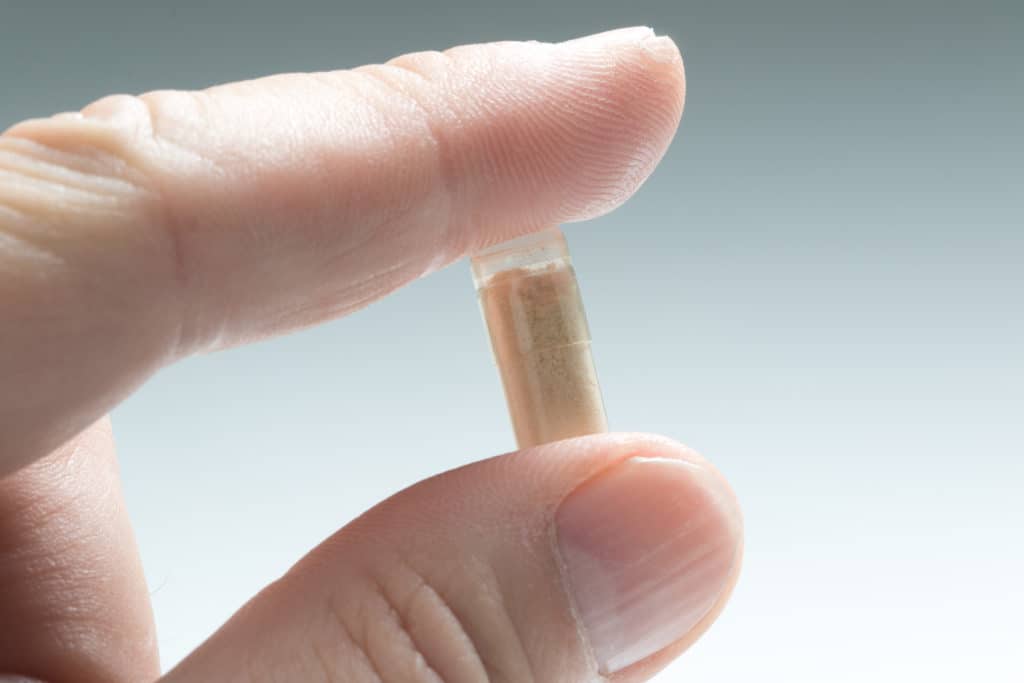Scientists at Nanyang Technological University, Singapore (NTU Singapore) have created probiotics with a unique edible covering that guarantees the helpful bacteria reach the colon after being consumed.
The World Health Organization defines probiotics as living bacteria that, when provided in sufficient proportions, provide a health benefit to the host [1]. They have been found to help prevent urinary and digestive tract infections, as well as to maintain healthy gut flora, which has been associated with a lower risk of obesity and general well-being.
However, numerous methods of distributing probiotics, such as supplements and dairy products, have not proved efficient in ensuring they survive conditions in the human stomach in sufficient amounts to enhance one’s health. Many studies suggest that the majority of probiotics in commercial supplements and yoghurts die within the first 30 minutes of being exposed to the stomach’s acidic environment.
In the NTU study, the probiotics, gut-friendly Lacticaseibacillus bacteria, were spray-coated with alginate, a carbohydrate produced from brown algae, in order to shield them from the severe acidic conditions in the stomach.
Only the probiotics with the NTU-developed coating survived studies replicating a passage through the human digestive tract. The bacteria are only released when they reach the small intestine, since the coating degrades by interacting with phosphate ions, which are abundant in the small intestine.
The development of the alginate coating technology underscores NTU’s dedication to the demands and problems of healthy living and ageing, which is one of four major challenges to mankind that the university aspires to solve through its NTU 2025 strategic plan.
In recent years, scientific investigations have demonstrated that an individual’s health is far more dependent on the support of “good bugs” in their gut than we previously assumed, said Associate Professor Joachim Loo of NTU’s School of Materials Science and Engineering, who conducted the study.
“Probiotics, on the other hand, are fragile bacteria that cannot withstand the harsh environment of our stomach. We intended to “parcel-wrap” and distribute probiotics to specific areas of the gut where they work best in order to maximise their efficacy as a dietary supplement. Through materials engineering, this moisture-stable packaging allows for more efficient probiotic distribution while also extending the shelf-life of the supplements. “
Ms. Tan Li Ling, a PhD student at NTU’s School of Materials Science & Engineering and the study’s first author, stated: “We chose alginate as the coating material because it is non-toxic to humans, of natural origin, and reasonably inexpensive.” Alginate also has acid-buffering qualities that help protect probiotics from the severe circumstances induced by stomach acid. “
The study’s findings were published in the peer-reviewed academic journal Carbohydrate Polymers in February. NTUitive, NTU’s enterprise and innovation organisation, has also submitted a patent application for the probiotic coating technique.
Extending the application of probiotics
The NTU probiotic coating technique is adaptable and can be used to make powder-like coated probiotics with a diameter of around 10 mm (0.0004 inch).
The approach employs protective sugars in addition to alginate to ensure that bacteria are not destroyed during the production process. Furthermore, the usage of calcium ions prevents the coating from deteriorating in liquids or in a wet environment, allowing it to have a longer shelf life.
The coated probiotics are also produced using the spray-drying approach. Spray-drying is a low-cost, high-throughput manufacturing process that is already widely employed in the food and pharmaceutical sectors. It would enable the NTU-developed coated probiotics to be mass-produced at a reasonable cost.
The scientists cultured Lacticaseibacillus bacteria before washing them in a salt solution to create the coated probiotics. Following that, the bacteria were packed together in a concentration that corresponded to the United Nations’ recommended probiotic dosage. Finally, the probiotics were spray-dried and alginate-coated. The entire procedure takes around an hour.
The coated probiotic bacteria may live in the refrigerator for up to eight weeks. During an eight-week testing period, the NTU-developed also did not degrade and was able to preserve probiotics from stomach acid.
Probiotic beverages, on the other hand, have a shelf life of up to seven weeks when refrigerated, but the probiotics in them begin to die out within a few hours at ambient temperature, according to the researchers.
Assoc Prof Loo continued, “With a paradigm shift toward illness prevention rather than therapy, probiotics may hold the key to moulding one’s health and maintaining one’s good health. By further modifying the coating technique, it will be feasible to apply it to a variety of additional probiotics as well as for other objectives, such as commercial uses in the agri-food and medical industries.
This technique is incredibly adaptable, Ms. Tan noted, since the coated probiotics may be included in a wide range of product types, including nutritional supplements and tablets, food and drinks, and even animal feeds.
Companies in the food and beverage sector have expressed interest in adopting and developing the NTU-developed technology.
The scientists will be testing their innovation on other types of probiotics, which will allow it to be applied to the agrifoodtech industry as it could be used to supplement the diets of reared animals, such as fish and chicken, with probiotics in order to find alternatives to antibiotics in agri-farming.
Pointers
- Expert Consultation with the Food and Agriculture Organization and the World Health Organization (2001).
- Harvard Medical School, Harvard Health Publishing, and Probiotics provide several health advantages (2020).
- FEMS Microbes, Volume 1, Issue 1What’s in your cupboard when it comes to expired probiotics? (2020).
- Food and Agriculture Organization and World Health Organization Report of a joint FAO/WHO working group on the development of recommendations for the assessment of probiotics in food. United Nations Food and Agriculture Organization, 2002.
- Digestive system. Dying in yoghurt: the quantity of surviving bacteria in probiotic yoghurt reduces with room temperature exposure, 2014.





